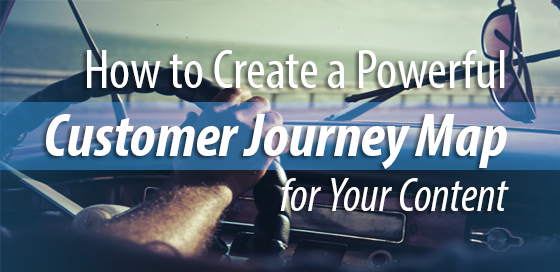On the surface, content marketing seems like a fairly simple process. “If you blog it, they will come.” Create high quality, regular content, and people will be drawn to your site and ultimately buy your product or services. Of course, in practice, there are a few more steps than that. You need to lead your potential customers through what’s called the Customer Funnel, which includes several different stages to be navigated. How do you do it? One of the most effective ways is to create a customer journey map for your content, to help customers from one stage to the next, and ultimately to the point of sale. Here’s how to do it.
Step 1: Outline Your Buyer Personas. Whom are you targeting with your products? Are you selling to college students? Pet owners? The people who make purchasing decisions in corporations? You might be targeting multiple types of people, depending on the products or services you offer. Write them all down.
Step 2: Identify Information About Your Buyers. Now that you’ve defined the type of person you’re selling to, it’s time to go into a bit more detail about who they are. What do they want? What do they do? If you have any data on your past or current customers, use it to help you gain a more complete picture of your potential customers and what they’re looking for. Things like ages, occupations, average income, etc. If you don’t have that kind of data on hand, try conducting a survey of your existing customer base. The better you know your customers, the more effectively you’ll be able to reach them when trying to sell your products.
Step 3: Identify Your Customers’ Goals. In the previous step, we identified what the customer wants—that is, what kind of products they’re buying. This step goes a bit deeper, and identifies what the customer wants to do. WHY do they want your product? What problem do they have that your company could potentially solve for them? What are their pain points? What are they ultimately trying to accomplish? This will further help you understand why a customer might go to one of your competitors instead of you. What do they have to offer that you don’t, and how can you overcome that obstacle?
Step 4: Create a Task List. Now that you’ve identified your customers’ goals, write a list of steps they’ll need to take in order to achieve that goal. For instance, say you’re a bookstore, and your customer’s goal is to locate a specific book that’s somewhat obscure and hard to find. What tasks will need to be completed in order to obtain that book? The list might look something like…
- Search for the book online
- Search online for bookstores in the area
- Call bookstores to see if they have the book in stock
- Compare prices between online and brick-and-mortar sellers
- Go to bookstore
- Get book
- Pay for book
Once you understand the physical journey that the customer takes, you can mold your customer journey content to fit with it.
Step 5: Find the Customer’s Channels. You’ve mapped out the journey the customer will take to achieve their goal. Now, where will they go for each step? If you know where they’re going, you can have content waiting for them at every step, to guide them towards your brand over other choices. For our bookstore example above, the customer might go to your website, your app, your Facebook page, your brick and mortar store, etc.
Step 6: Brainstorm Content. You know what your customer wants, how they can get it, and where they’ll go. Now all you need to do is determine what kind of content would be best fitting for each step and location. When the customer is looking for a particular book, you’ll want to provide them with a listing for that book and similar books, product details, and a list of what stores it’s carried in. When they’re looking for bookstores in their area, you’ll want to provide them with a list of your locations and driving directions. This includes more than just online content, as well. A magazine, a flyer, or a brochure all count as content that you can use to reach customers at various stages in their journey.
The key to reaching your customers with your brand is content. But the question is what kind of content to create, and how best to get your customers to see it. If you create a customer journey map from the beginning of the sales cycle to the end, you can understand just what it is your customer is looking for and where they’re looking for it, and position yourself to provide it for them.
